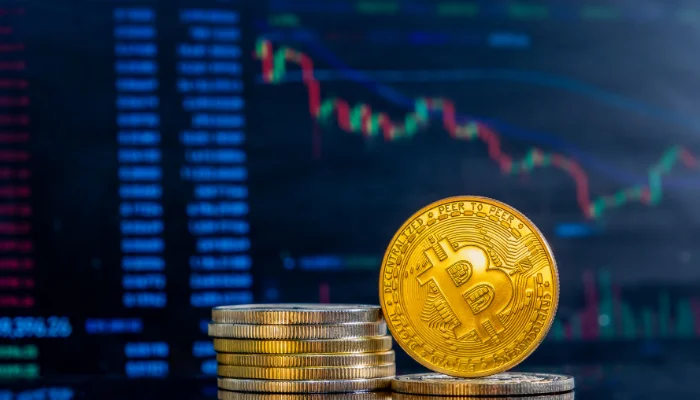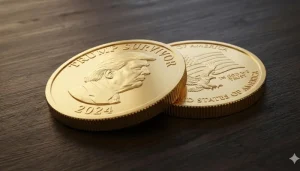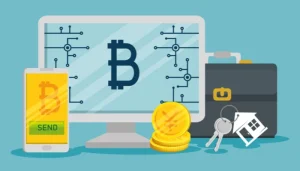Cryptocurrency continues to revolutionize the financial world, but one question confuses most beginners: How is a Cryptocurrency Exchange Different from a Cryptocurrency Wallet?
If you’ve just entered the crypto space, you’ve likely encountered both terms and wondered whether they serve the same purpose. After all, both involve handling digital currencies, but their functions are entirely different.
At Fillyx, we have seen many new investors make expensive mistakes. They often store their crypto in the wrong place. They also misunderstand how exchanges and wallets work together.
This guide will explain the difference between cryptocurrency exchanges and wallets. The guide will show when to use each one. The outline will also show how to protect your assets like a pro.
What Is a Cryptocurrency Exchange?
A cryptocurrency exchange is a website where you can buy, sell, and trade cryptocurrencies like Bitcoin,

Ethereum, or Solana. Think of it as a digital marketplace, similar to a stock exchange, but for crypto assets.
Exchanges come in two primary types:
- Centralized exchanges (CEXs) like Binance, Coinbase, or Fillyx Exchange, where transactions are managed by a third party.
- Decentralized exchanges (DEXs) like Uniswap or PancakeSwap, where trading happens directly between users without intermediaries.
When you deposit money into an exchange, you give the platform control of your crypto. This means the exchange holds your private keys instead of you. This makes it convenient for quick trades but introduces potential risks if hackers compromise the platform.
To decide when exchange wallets should be used, the answer is simple: only for short-term trading or liquidity purposes. If you plan to hold crypto long-term, it’s safer to transfer it to a private wallet.
What Is a Cryptocurrency Wallet?
A cryptocurrency wallet is a digital tool. It can be software or hardware. This wallet lets you store, send, and receive cryptocurrencies safely. Unlike exchanges, wallets give you control of your private keys, which means you truly own your crypto.
Two main types of wallets to understand are:
1. Hot Wallets
Hot wallets connect to the internet. They’re convenient for frequent transactions but are more vulnerable to cyber threats. A common question users ask is: what is one potential risk associated with a cryptocurrency hot wallet?
The answer: since hot wallets are online, they’re susceptible to hacking and phishing attacks.
2. Cold Wallets
Cold wallets are offline storage devices such as hardware wallets or paper wallets. They’re ideal for long-term storage because they remain disconnected from the internet, significantly reducing hacking risks.
So, how are cryptocurrency hot wallets different from cold wallets? The primary difference lies in connectivity and security, hot wallets trade convenience for accessibility, while cold wallets prioritize maximum protection.
Key Differences Between a Cryptocurrency Exchange and a Wallet
The heart of our discussion, How is a Cryptocurrency Exchange Different from a Cryptocurrency Wallet?, lies in their purpose, ownership, and security.
Here’s a quick comparison table to summarize:
| Feature | Cryptocurrency Exchange | Cryptocurrency Wallet |
| Purpose | Buy, sell, or trade crypto | Store and secure crypto |
| Ownership of Keys | Platform-controlled | User-controlled |
| Internet Connection | Always online | Can be offline (cold wallet) |
| Security Level | Medium | High (especially cold wallets) |
| Best Use Case | Active trading | Long-term storage |
To illustrate further, think about the difference between exchange and wallet in Binance, when you buy Bitcoin on Binance, it first resides in your exchange account. To truly secure it, you transfer it to your Binance Wallet or an external wallet you control.
How Exchanges and Wallets Work Together
Even though they serve different purposes, exchanges and wallets complement each other.
Here’s how it works in practice:
- You buy crypto on an exchange (e.g., Fillyx or Binance).
- You transfer it to your wallet for safekeeping.
- When ready to trade or sell, you send it back to the exchange.
This synergy allows you to enjoy the liquidity of an exchange and the security of a wallet.
When Should You Use an Exchange or Wallet?
The choice between an exchange and a wallet depends on your goals.
- Use a cryptocurrency exchange if you’re actively trading, exploring new tokens, or swapping assets regularly.
- Use a cryptocurrency wallet to store your crypto safely for months or years. This way, you won’t lose access if a platform fails.
At Fillyx, we suggest that beginners use a hybrid strategy. Keep a small amount of crypto on the exchange for convenience. Transfer the rest to a hardware wallet for long-term safety.
Security Tips: Keeping Your Crypto Safe
No matter which tool you use, security should always come first. Here are two features that help make cryptocurrency be secure:
- Encryption and Blockchain Verification – Each transaction is recorded on a decentralized ledger, making tampering nearly impossible.
- Private Keys and Multi-Factor Authentication (MFA) – Always enable 2FA and never share your private keys.
To minimize risk:
- Use hardware wallets for significant holdings.
- Avoid public Wi-Fi when accessing your crypto.
- Regularly update your wallet software.
- Follow Fillyx’s Crypto Security Essentials Guide for 2025 best practices.
Conclusion
So, How is a Cryptocurrency Exchange Different from a Cryptocurrency Wallet?
In short, an exchange lets you trade crypto, while a wallet lets you own and secure it. Understanding this difference could be the most important step you take toward becoming a confident crypto investor.
At Fillyx, we encourage every user to adopt smart crypto habits, trade efficiently, store securely, and stay informed. Whether you’re managing Bitcoin or exploring altcoins, always control your private keys and use trusted platforms.
FAQs
Can I keep my crypto on an exchange?
Yes, but it’s not recommended for long-term storage. Exchanges are convenient for trading, but wallets provide better control and security.
Do I need both an exchange and a wallet?
Absolutely. Use the exchange for transactions and your wallet for safekeeping. This dual approach offers flexibility and safety.
What’s the biggest risk of using hot wallets?
The main risk is exposure to online hacks, which is what is one potential risk associated with a cryptocurrency hot wallet? It’s convenience versus vulnerability.
How do I transfer crypto from an exchange to a wallet?
Simply copy your wallet’s receiving address, paste it into your exchange’s withdrawal field, and confirm the transaction. Always test with a small amount first.
Are exchange wallets safe?
They’re safe for short-term use, but remember, when should exchange wallets be used? Only when you plan to trade soon. For storage, move funds to a secure wallet.






